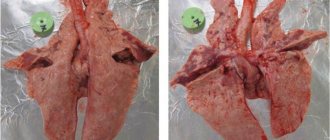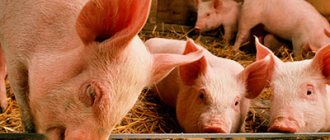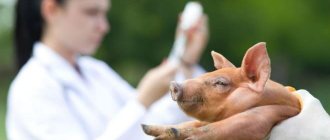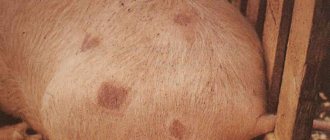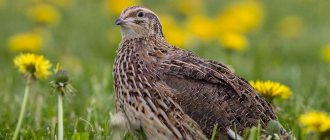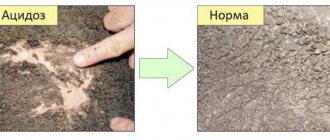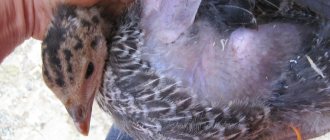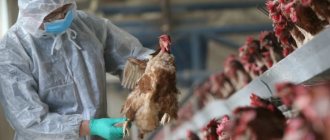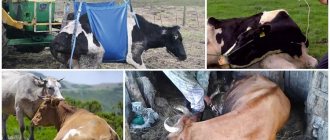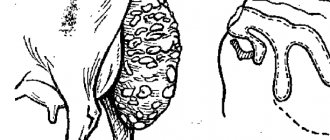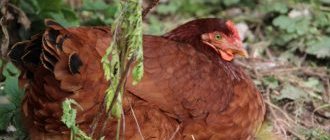Poisoning pigs with table salt is a common problem that any farmer can face. Sodium chloride is an important part of the animal diet; in sufficient quantities it improves the appetite of pigs, but after prolonged salt starvation or consumption in excessive quantities it can lead to severe toxemia or be fatal. The main thing that any livestock breeder should remember is that at the first symptoms of the disease, you need to contact a veterinarian for help in treatment.
Main reasons
Of course, often the occurrence of salt poisoning in pigs is primarily associated with human behavior, the level of his attentiveness and care for animals. Pigs are one of the few mammals that are omnivores and are absolutely not picky about their food. When feeding, the piglet tries to fill its stomach, and only a person must build a suitable diet for it. Every breeder must clearly understand that not all food is suitable for feed, so you need to be extremely conscious when choosing food for livestock. For healthy pigs, a dose of 2 kg of salt can already become lethal, and for gilts with a lack of minerals it is only 0.5-2 g per 1 kg of weight.
It is worth highlighting several main reasons for poisoning pigs with sodium chloride:
- Feeding with a feed mixture containing a large amount of substance.
- Feeding spoiled food, cheese, salted meat, herring products, as well as poorly prepared feed mixture, food waste.
- Excessive addition of chloride to food. Scientists have proven that, having sodium chloride freely available, piglets themselves perfectly regulate the amount they consume.
What happens in the body
According to modern scientists, the negative effect on the body caused by an increase in sodium chloride in the blood works as follows.
Table salt has a deplorable effect on the functioning of the intestines and mucous membranes, often leading to at least irritation of sensitive organ systems, which in a neglected state can lead to necrosis.
Therefore, salt poisoning is almost always accompanied by vomiting and the presence of blood in the stool. After the substance passes through the digestive tract, salt enters the blood. Everyone knows that sodium chloride absorbs water, which subsequently leads to dehydration of tissues and their further degradation. Subsequently, the increased amount of the substance begins to have a detrimental effect on the nervous system, creating its excessive stimulation, as evidenced by the symptoms. If your piglet ceases to navigate in space, constantly bumps into walls and other obstacles, and begins to walk in circles non-stop, you can be sure that this is poisoning from table salt.
When opening a dead animal, ulcers are often found covering the surface of the digestive tract. The liver, spleen and other internal organs are always enlarged and filled with blood. If it is impossible to determine the cause of toxicity after autopsy, scientists often determine the amount of chloride in the liver.
Signs of poisoning in pigs
Many veterinarians call poisoning one of the simplest diseases from a diagnostic point of view, since the first symptoms appear in animals almost immediately after eating prohibited or low-quality food. Therefore, the farmer’s main task is to monitor the condition of the livestock and pay attention to any changes in well-being or behavior. Among the warning signs that may indicate intoxication, veterinarians name:
- complete or partial refusal of food;
- weakness, apathy, depression;
- increased activity of the individual, rapid excitability;
- vomit;
- noticeable bloating;
- bowel dysfunction (as a rule, the individual first suffers from constipation, then diarrhea begins);
- the appearance of large amounts of mucus or bloody discharge in the stool;
- increased salivation;
- change in color of mucous membranes;
- gait disturbance (becomes shaky, unsteady);
- a noticeable increase or, conversely, decrease in body temperature;
- dilation or constriction of the pupils;
- the appearance of seizures.
Note that the set of specific signs in a sick individual depends on the type of intoxication. Intoxication of the body is not always accompanied by all of the listed symptoms, since each product in the diet gives its own reaction. Thus, an experienced veterinarian can determine what exactly caused the intoxication based on a set of certain manifestations.
Remember! If an animal exhibits at least one of the listed symptoms, this is a signal for quick action. Pig poisoning is a serious disease that leads to severe intoxication of the body. The weakening of the animal, as a rule, occurs very quickly, so it is necessary to provide assistance to injured individuals without delay.
Symptoms of the disease
Salt poisoning is very dangerous for pigs, in particular for piglets, whose bodies are still quite weak. If you notice the first symptoms, you should immediately contact your veterinarian. Signs of sodium chloride toxicity include:
- Constant thirst.
- Abrupt refusal to eat.
- Pupil dilation.
- The appearance of vomiting.
- Frequent pulse.
- Inflammation or blue discoloration of the skin.
And also if the animal loses orientation in space, the temperature rises greatly, the piglets refuse to eat, the sow sits like a dog, hits obstacles, or does not stand on her feet, lies down, foams at the mouth, then the breeder should immediately contact a veterinarian, because that these symptoms are a sign of severe poisoning and intoxication of the body, which will certainly lead to death without proper treatment.
Types of poisoning in pigs
Various substances can provoke poisoning in piglets and adults. Intoxication has different symptoms, they vary depending on the season. Salt poisoning is more often diagnosed in spring, and bad vegetables in autumn. How do overdoses of different products and substances manifest?
Salt intoxication
Poisoning of pigs with table salt occurs when they ingest cattle feed. It contains a high content of sodium chloride. Often, owners give animals food with a high content of this substance. Signs of poisoning develop quickly, pigs tolerate such intoxication seriously, especially piglets.
Gradually, the symptoms of salt poisoning in pigs become intense, convulsive manifestations appear, coordination is impaired, and body temperature rises. If you do not provide assistance to the animal within three days, it will die.
Poisoning pigs from rat poison
Such a substance poses a danger to any living organism. Pigs may be exposed to grain treated with rat poison or a dead rodent. Cases of eating poison laid out to get rid of mice and rats cannot be ruled out. Poisoning is characterized by the presence of certain signs. Symptoms:
You will like the article: “ What to do if your dog is poisoned by rat poison? ".
Poisoning from bittergrass
Creeping cornflower - bitterling - is a poisonous plant that is often eaten by farm animals. It is especially dangerous for horses, but pigs can also be harmed. It is eaten in the form of hay and chaff with an admixture; after drying it does not lose toxicity. In pigs, symptoms of mustard poisoning do not develop immediately, but after some time.
Poisoning in piglets and pigs also occurs with other herbs containing toxic substances. When eating wormwood and henbane, a disruption of the nervous system is observed. Mustard and rapeseed have a negative effect on the respiratory tract. Foxglove and hoofweed disrupt the functioning of the heart. Consumption of celandine has a negative effect on the digestive system.
You will like the article: “ Human potato poisoning: first aid and treatment methods .”
Beets, raw and cooked, are healthy. However, with prolonged exposure to low temperatures, nitrates turn into nitrites - toxic compounds that cause poisoning. The pig has an increase in temperature, yellowing of the mucous membranes of the eyes, rapid breathing, and copious salivation. In such a case, first aid and treatment are required.
Intoxication with pesticides and protein
Poisoning by pesticides occurs as a result of such substances getting into food. Animals experience severe diarrhea, vomiting, and impaired breathing. Muscle paralysis, severe salivation, and gait disturbance are possible.
Protein poisoning develops when there is an excess amount of protein in food and a minimum amount of fat and carbohydrates. Dangerous for piglets due to the lack of balance of microelements, which leads to developmental problems.
Treatment of the disease
What to do if you observe at least some symptoms in a pig after eating food? You need to understand that your pig has been exposed to toxemia. You should immediately contact a veterinarian and begin providing primary care to the animal.
Call a doctor immediately, and while he gets there, you can first do a gastric lavage and prepare the boar or sow for examination. You can give some water.
If there are signs of severe poisoning, it is strictly forbidden to give water to water, because water will poison the piglet even more.
The signs of the disease or the treatment process are the same for both boars or sows and piglets.
Actions of the veterinarian
All further treatment and procedures for recovery are determined only by the veterinarian. Almost always, intramuscular injections of calcium gluconate help well in the treatment of sodium chloride poisoning. The frequency of administration and dosage of the medicine varies depending on the severity of the condition of the sick animal and ranges from 1 to 5 ampoules of 10 ml 4-5 times a day.
For intoxication with table salt, a 1% solution of triammon phosphate is used. The dose is also selected by the doctor depending on the degree of poisoning and starts with 0.4 g/kg of the hog's live weight.
If the condition worsens after using a laxative, a 10% solution of sodium chloride is administered; it is recommended to force the patient to drink large amounts of water.
To restore the nutritional process, hydrochloric acid is prescribed in small quantities.
Unfortunately, nothing special has been developed for treating piglets from such poisoning in livestock farming, so a pig in serious condition has to be slaughtered.
Prevention of poisoning in pigs
After poisoning with sodium chloride, pigs should not be given food containing table salt, the content of which in the feed mixture exceeds the threshold of 0.5%. Piglets do not need to introduce salt into their diet right away - 40-50 grams every day, pregnant sows - 30-40 grams, suckling sows - 40-50 grams.
You need to clearly know how much salt the piglet consumes per day.
Very small piglets (up to three months) are recommended from 10 to 15 grams of salt. From 5 months add 15-20 grams, from 7 months - 20-30 grams of sodium chloride per day, and after 9 months about 30-40 grams.
Under no circumstances should a pig be allowed to eat feed made for ruminants. We should not forget that an animal, like a person, must receive a sufficient mineral and vitamin complex. In order to prevent food salt poisoning, the breeder must constantly monitor the health of his pigs. It is impossible for a pig to refuse food; you need to monitor the amount of food and water consumed. It is also advisable to use feed in granular form, which does not allow uneven distribution of salt during transportation of the product.
Signs and treatment of poisoning in piglets
The characteristic symptoms and treatment for poisoning in pigs can differ radically, because the animal is capable of accidentally eating anything. Each case requires separate consideration. Piglets are omnivores and do not feel full.
They are ready to destroy everything in their path. To avoid a negative impact on their body, the farmer needs to carefully plan the menu and remove all potentially dangerous substances.
Treatment methods for different types of intoxication will be discussed in this article.
Potential danger
Pigs can be poisoned by anything, since their body does not feel full and does not distinguish between the quality of food. There are different types of intoxication that occur after consuming the following substances:
- poor quality or unsuitable food products;
- salt;
- pesticide;
- poisonous plants;
- medicines;
- excess protein.
Poisoning of pigs can be seasonal. Particular vigilance should be in the spring, when there is a high probability of accumulation of sodium chloride in the animal’s body. This happens if the owner fed the piglet pickles.
In the autumn, frequent intoxications from low-quality root crops occur, because it is time to harvest. If you are not careful about the diet, there is a high probability that pigs will eat spoiled food.
Signs of poisoning in piglets can vary, and your veterinarian will determine the proper treatment and nutrition. Below we will look at possible symptoms in more detail and tell you what to do in each specific case.
Be careful with root vegetables
A piglet can very easily become poisoned by potatoes. This is because green or sprouted root vegetables contain solanine, a toxic substance. It should not get into food. If a pig eats it, it becomes depressed, even to the point of convulsions and death. The first signs of poisoning are drooling and diarrhea.
In this case, the pig should be given a gastric lavage and given a lot of liquid with a mild laxative. This can be either castor or Vaseline oil.
A pig can also be poisoned by beets. This is a vegetable that contains a lot of sugar and is given fresh or boiled. However, when this root crop is exposed to low temperatures for a long time, nitrites are formed in it.
You cannot leave the beets in the liquid in which they were boiled until they have completely cooled; the water must be drained immediately. Also, you should not steam food containing this root vegetable for a long time. Old tops are also a cause of animal poisoning.
If nitrites enter the body, the piglet’s mucous membranes turn yellow, body temperature rises and salivation increases. The animal weakens and breathing quickens. You can help by washing, drinking plenty of fluids and mucous decoctions (from starch or rice).
Inappropriate diet
In addition to root vegetables, pigs can be poisoned by moldy feed. Rotten and frozen vegetables should not be given to animals. Food for sows or pregnant individuals is especially carefully checked. Moldy products cause the death of piglets and abortions in pregnant pigs.
Another useful, but potentially dangerous product for pigs is cotton cake. It contains toxic gossypol.
Intoxication occurs literally on the second or third day of feeding, or after prolonged consumption. To prevent this, the cake is filled with slaked lime and left for a day.
This mixture in an amount of no more than 300 g is added to the feed for 4-5 weeks. Then there is a break of 2 weeks.
Flax cake can cause intoxication in the pig's body, since it contains the glycoside linamarin. Hydrocyanic acid can be formed from it. Therefore, this product must be fed in portions or after heat treatment at temperatures above 65 degrees.
Castor bean seeds are often added to pig feed. To prevent alkoloidricin poisoning, they are washed with a 10% solution of table salt. When it becomes transparent, the seeds are ready to eat. Safety can also be achieved by heating the product to 150 degrees for 2 hours.
Harmful herbs
While the above plants can be given to pigs with certain treatments, there are special poisonous plants that they generally do not want to eat. However, they can get into food accidentally. Therefore, when feeding herbs, you need to make sure that no harmful herbs get there.
These include: foxglove, lily of the valley, buckwheat, St. John's wort, horsetail, oleander, hemlock, tobacco, spurge. All of them cause intoxication, which has such symptoms as strange behavior, digestive disorders, and heavy breathing. This causes disruption of the central nervous system (CNS) and rapid heartbeat.
You can help with standard methods - washing and drinking plenty of water. Mucus decoctions also work very well.
Salt toxemia
Table salt poisoning in pigs is considered the most dangerous type of intoxication. Within 30 minutes you can notice the first signs - thirst, vomiting, wide pupils, rapid pulse and redness of the skin. Also, the animal will be indifferent to food.
You can poison a pig in this way if you feed it feed mixtures for cattle, since they contain a large amount of sodium chloride. Adding salty foods can also negatively affect the body. These are fish, meat, feta cheese and other pickles.
For an adult pig, 2 kg of salt is enough to cause death; for a pig, 3.7 g per 1 kg of weight is enough.
This poses a huge danger for them, since the poisoning is acute and develops very quickly. Excess sodium and loss of potassium leads to poor metabolism.
In addition, pulmonary edema and oxygen starvation of organs and tissues of the body begin. Death occurs from suffocation.
Ambulance
The acute course of intoxication may include such symptoms as convulsions, high temperature, convulsions, and poor circulation in the extremities. The pig falls to its feet and may be in a comatose state. Another factor of salt poisoning is that the poisoned animal will rest its head against the wall. Already all this is followed by death.
https://www.youtube.com/watch?v=aTTrSCpMI40
If an acute course of table salt poisoning occurs - and this happens most often - then it can last from 1 to 2 days and help should be provided before the pulse slows down.
As soon as symptoms of salt toxemia are noticed, help must be given immediately to avoid the worst. Before the veterinarian arrives, the pig or piglet is given a gastric lavage. Drinking is given in small portions, but often. If the form is severe, then it is forbidden to give liquid, otherwise the situation will worsen.
We continue treatment with injections
The second step is intramuscular administration of calcium gluconate. The dose is calculated depending on the degree of poisoning. It can vary from one to five 10 ml ampoules 4-5 times a day.
The next medicine will be a 1% solution of triammon phosphate. It is dosed in the amount of 0.4 g per 1 kg of pig weight.
Animals are injected with oil laxatives, and in order to avoid disorder due to this, they are prescribed a 10% sodium chloride solution, mucous decoctions and drinks. To prevent re-poisoning of the pig, table salt should not be added to food; in the future it is introduced gradually.
For adults and suckling sows, 40-50 g every day will be enough, for pregnant women - 30-40 g. Add 10-15 g of salt to the diet of a three-month-old pig and then increase the norm as age increases. Water supply is stable and accessible.
Pesticides, protein and drugs
In pig farming, animals can be poisoned by rat poison. Signs of this include rapid breathing, difficulty breathing, excessive salivation in pigs, loss of coordination, paralysis and altered behavior. Help, as always, is based on gastric lavage. Next comes drinking milk, prescribing mucous decoctions and oil emulsions.
In case of arsenic poisoning, the drug Dicaptol is administered intravenously. Dose 1 ml per 1 kg of pig weight.
If a pig gets too much protein into its body, it has a poisonous effect. Interest in food is lost, weakness and loose stools with bloody impurities occur. This type of intoxication is easier to deal with than all of the above. You just need to reduce the amount of protein in your food and increase the amount of foods containing fats and carbohydrates.
Foaming at the mouth
With excessive use of drugs, convulsions, drooling, rapid heartbeat, vomiting, loose stools, and shortness of breath are observed. There may be both excitement and weakness. This involves gastric lavage and the use of laxative oil solutions.
It is not always clear why pigs foam at the mouth in every case of poisoning. Know that in fact, such a sign can accompany any type of described pathology. Sometimes excessive salivation can be confused with foamy masses.
This symptom may include vomiting, bloating, diarrhea or constipation. The pig may have an unsteady gait and an increase in body temperature. This can also apply to any type of poisoning.
Keep the poison out of reach
If the pig lies down and does not get up, or has an unsteady gait, then veterinarians may recommend an intramuscular injection of caffeine 10-20 ml. Gastric lavage and drinking plenty of fluids are also required. Chamomile decoction and laxatives have a good effect.
Most importantly, you need to carefully monitor the quality of the feed. It should be fresh and balanced. In some cases, the veterinarian can create a personalized menu. All toxic substances and chemicals must be stored in inaccessible places. If baiting of rodents is required, then the poison is placed where the pig will not go.
In the article “Why does a pig lie down and not eat” you can find out other reasons for the uncharacteristic behavior of piglets.
If you liked the article, then like it.
Write comments on the topic of poisoning of pigs and piglets.
